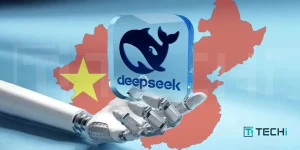Latest
5064 Stories

Meta’s Oversight Board to Assess Hate Speech Policy Changes
Meta, the parent company of Facebook, Instagram, and Threads, has long faced scrutiny over its content moderation policies, especially when...

Nvidia CEO Shrugs Off DeepSeek Challenge as AI Chip Sales Soar
In the high stake world of AI, chips lead in the power race of dominance, the AI world wouldn't just...

Amazon Unveils Alexa+ AI Assistant to Revolutionize Smart Living
This is a world where intelligent assistants are kept exclusively to setting alarms and playing music along with it misunderstanding...

Alibaba Goes All-In on Open-Source AI With Wan 2.1 Release
Alibaba is making big waves in artificial intelligence. The Chinese e-commerce giant has now released its latest AI model, Wan...

Apple Shareholders Uphold DEI Initiatives Amidst Conservative Opposition
In a corporate environment where policies move as quickly as software updates, Apple has maintained a stand on Diversity, Equity...

German Startup Proxima Fusion Accelerates Stellarator Breakthrough
Possibly dating back to the era of sci-fi, humanity's dream of infinite clean energy has always seemed extravagant until now....

OpenAI Expands Deep Research Tool to More ChatGPT Subscribers
As AI-powered tools become more integral to professional and academic research, OpenAI is broadening access to its Deep Research feature....

Five Things Old Media Still Don’t Get About The Web
Today the internet seems to have changed the information aspect, it just actually smashed the monopoly of the old media....

Perplexity Launches $50M AI Venture Fund to Back Future Tech Innovators
Creating the best chatbot is no longer a race nowadays; it's got to do with who is throwing the biggest...

Meta Reportedly Planning $200 Billion AI Data Center Expansion Amid Growing Infrastructure Race
Meta is reportedly exploring a massive $200 billion investment in a next-generation AI data centre campus, signalling an aggressive push...

After R1’s Success, DeepSeek Fast-Tracks Launch of New AI Model R2
DeepSeek has entered into the game changer territory of AI, wherein tech giants are choking each other for supremacy, with...

TikTok (with Douyin) Becomes First Non-Gaming App to Surpass $6B Revenue
TikTok, the virtual stage where blooming viral trends and some dance moves dare to question cultural viability, has now dipped...
Page 5 of 422